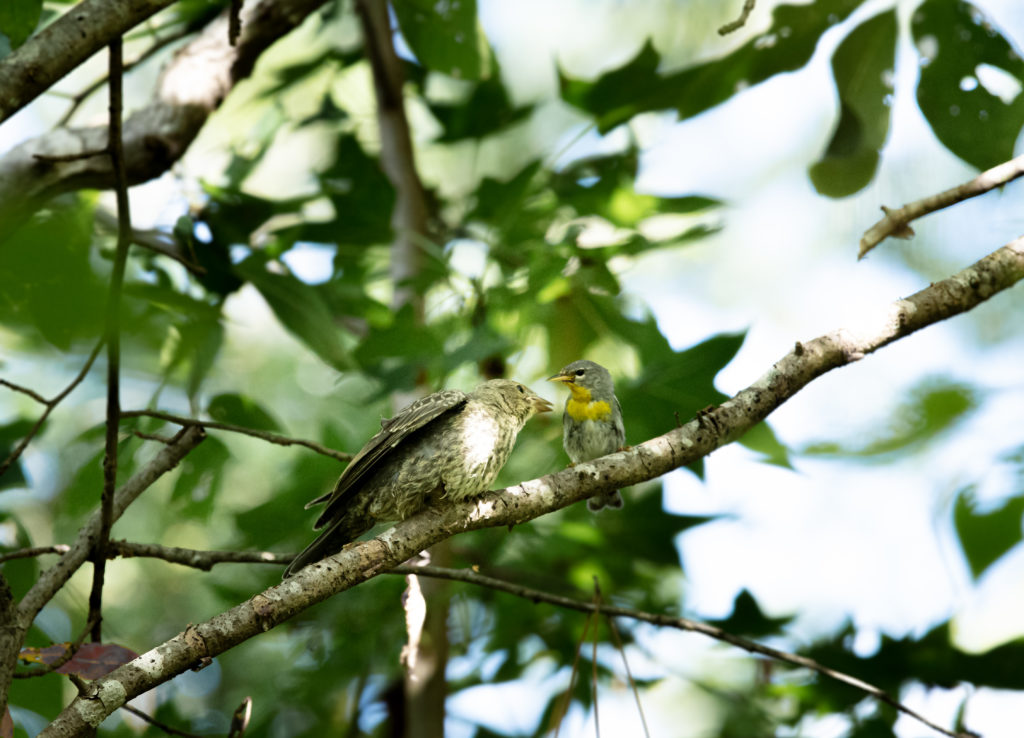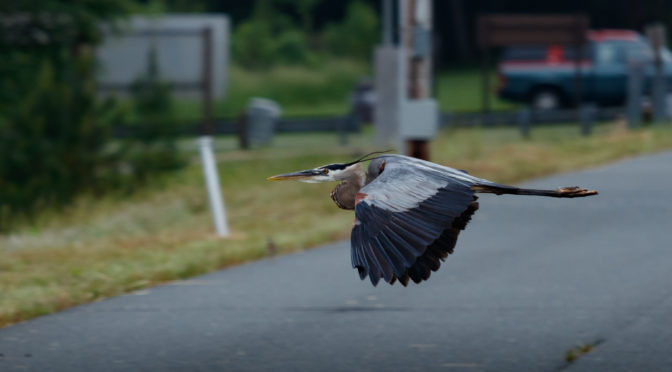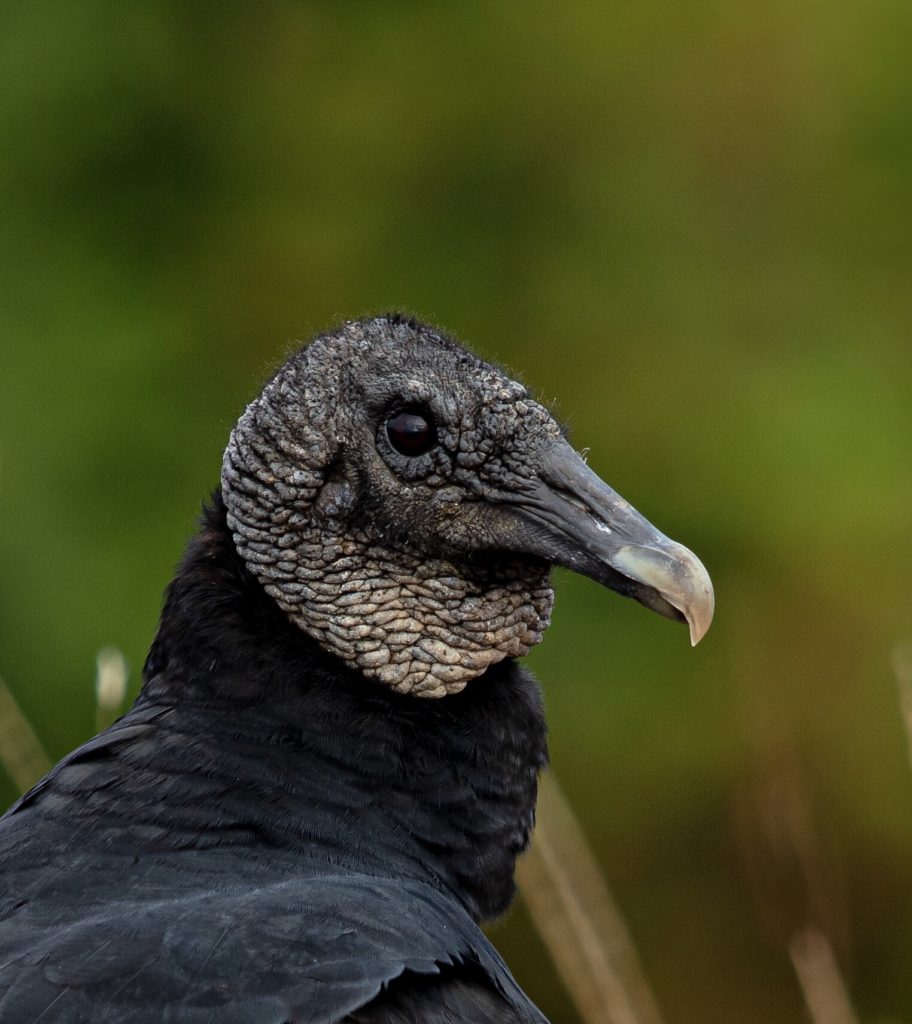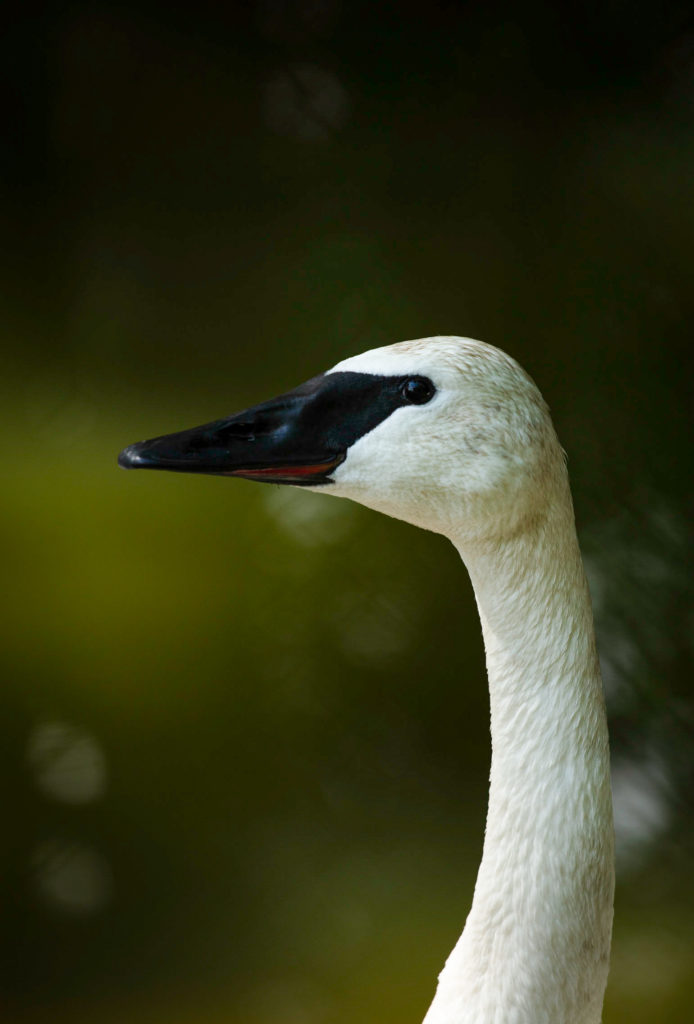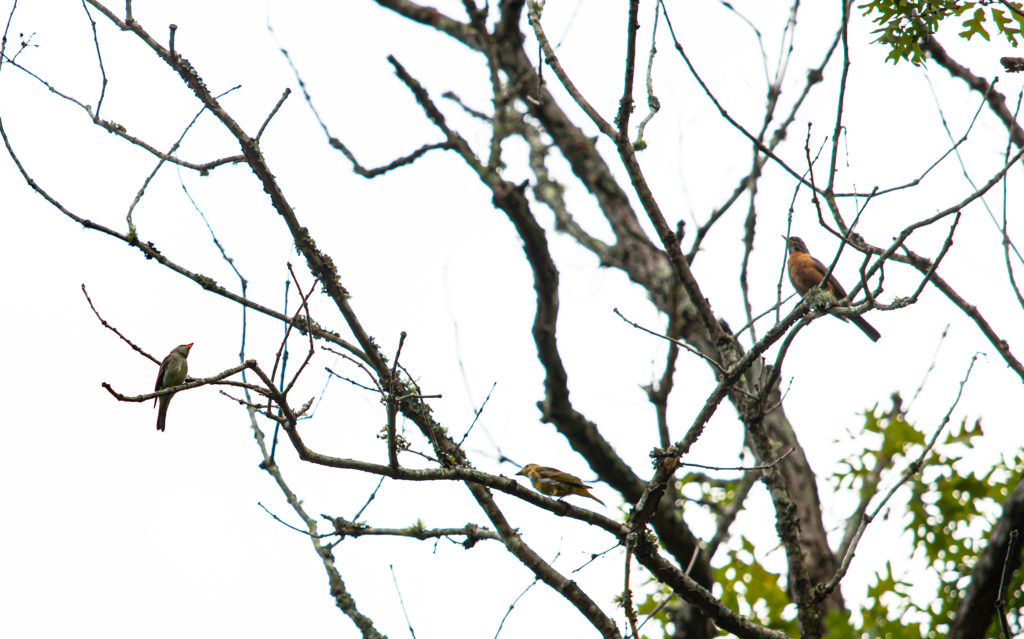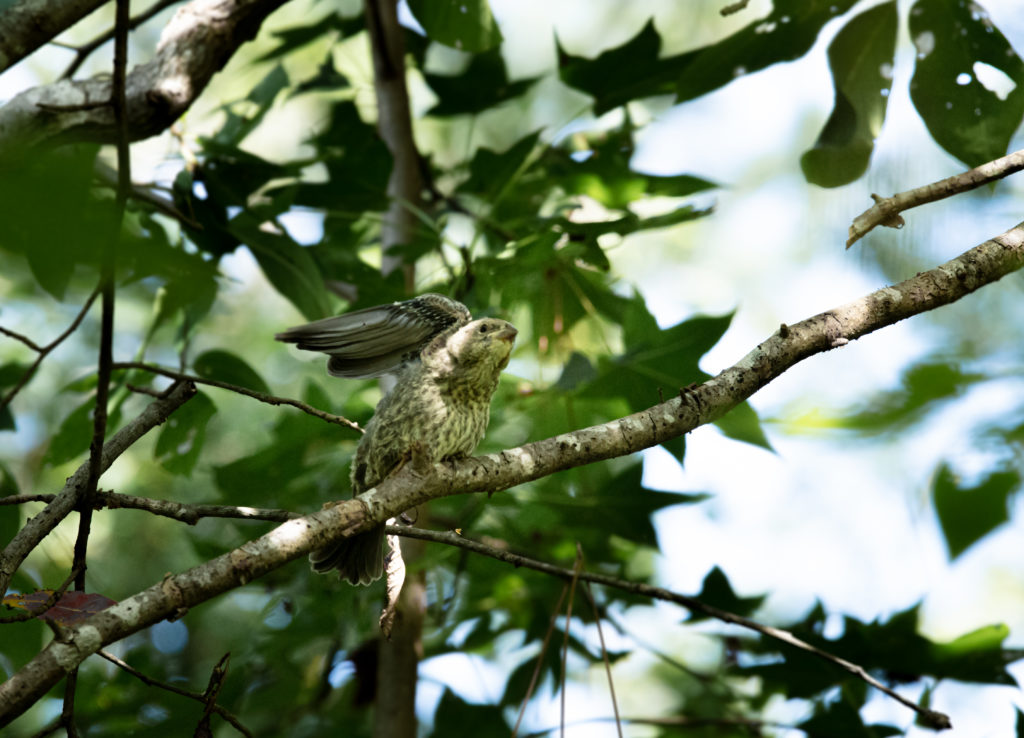
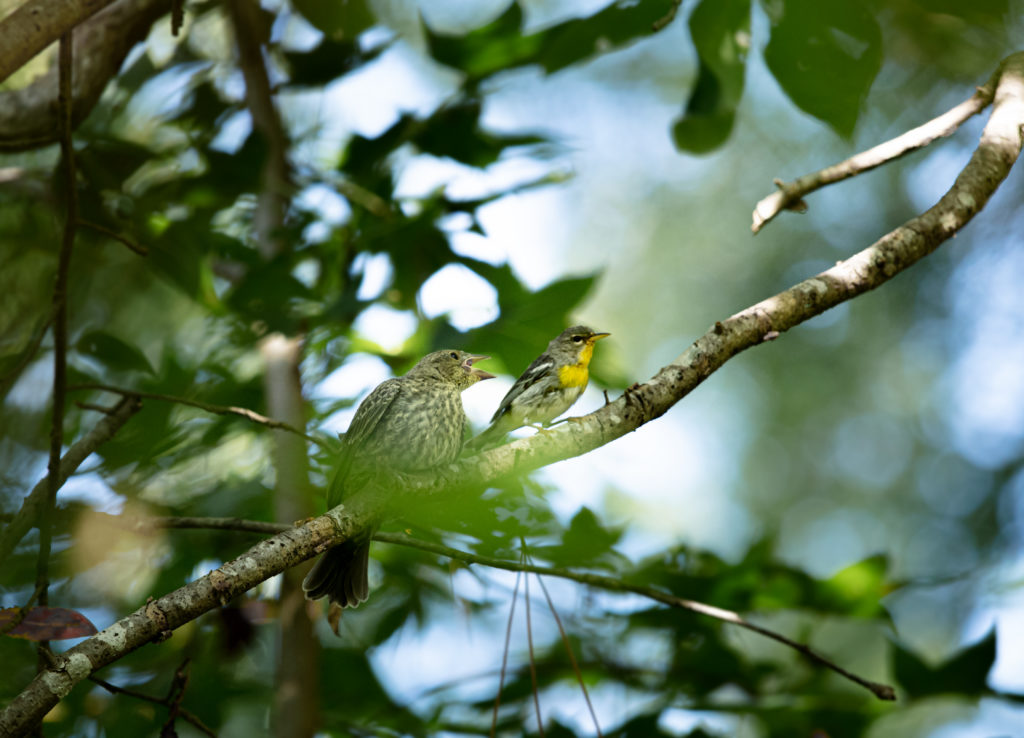
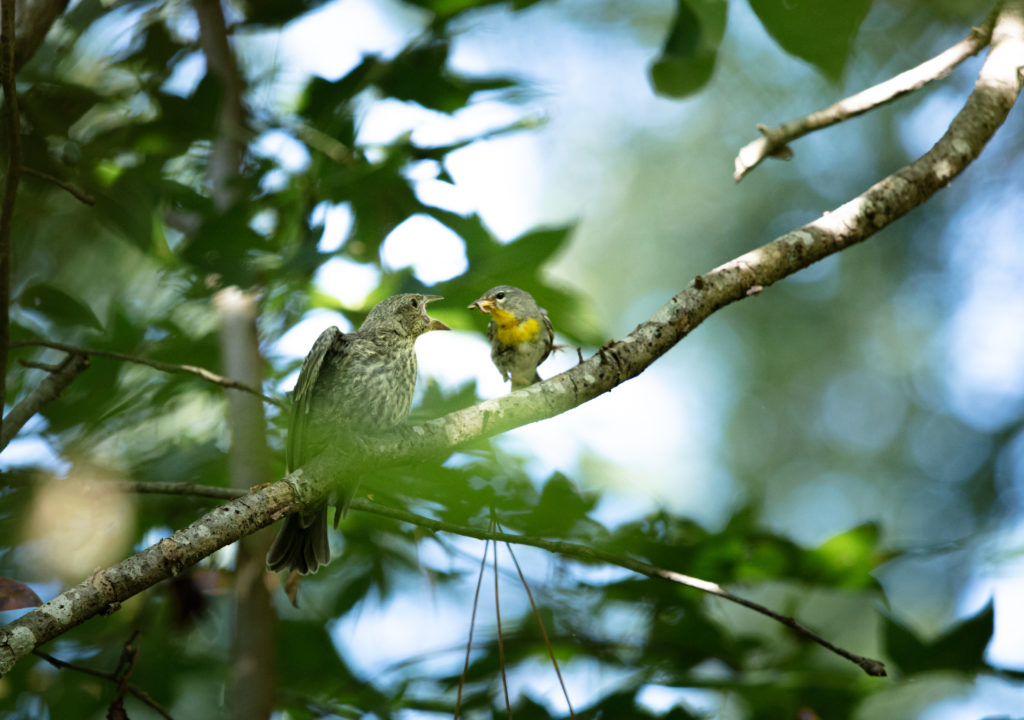
Since Cowbirds are known for laying their eggs in the nests of other birds, the question is how does a Cowbird learn how to be a Cowbird instead of a Warbler, Gnatcatcher, or Blackbird host?
Researchers at the University of Illinois observed that the Cowbirds mother actually remained in the host birds territory and could hear the cries of her offspring.
In response to hearing the begging cries of the baby cowbird, the females responded, not by feeding it, but by calling to it.
The researchers think that this behavior may help the cowbird fledglings to eventually find other adult cowbirds that are vocalizing, as they fly from feeding areas to roosting areas at dusk each day.
Nature is endlessly surprising!
Photo by Sally Adams Siko
Canon 5DS
Harris Lake Park, New Hill North Carolina

